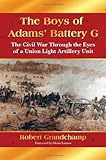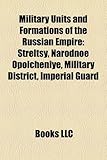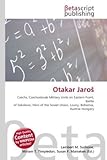|
|
Help |
| Home - Basic M - Military Units Union (Books) | |
e99 Online Shopping Mall
|
|
Help |
| Home - Basic M - Military Units Union (Books) | |
| 1-20 of 38 | Next 20 |
click price to see details click image to enlarge click link to go to the store
| 1. Military Units and Formations of the Union Army: United States Colored Troops, Veteran Reserve Corps, United States Volunteers | |
 | Paperback: 40
Pages
(2010-09-15)
list price: US$14.14 -- used & new: US$14.13 (price subject to change: see help) Asin: 1157001718 Canada | United Kingdom | Germany | France | Japan |
|
Editorial Review Product Description | |
| 2. [Burial lists of members of Union and Confederate military units by Sherman Lee Pompey | |
| Unknown Binding:
Pages
(1971)
Asin: B0006CBPPQ Canada | United Kingdom | Germany | France | Japan | |
| 3. Military Units and Formations of the Soviet Union: Spetsnaz, Mechanized Corps, Russian Commando Frogmen, Leningrad Narodnoe Opolcheniye Army | |
 | Paperback: 84
Pages
(2010-09-15)
list price: US$19.99 -- used & new: US$19.99 (price subject to change: see help) Asin: 1157001696 Canada | United Kingdom | Germany | France | Japan |
|
Editorial Review Product Description | |
| 4. Military Units and Formations of the Soviet Union in World War Ii: Long Range Aviation, Narodnoe Opolcheniye, 1st Air Army | |
 | Paperback: 28
Pages
(2010-09-15)
list price: US$14.14 -- used & new: US$14.13 (price subject to change: see help) Asin: 1157472745 Canada | United Kingdom | Germany | France | Japan |
|
Editorial Review Product Description | |
| 5. TENNESSEANS IN THE CIVIL WAR: A Military History of Confederate and Union Units with Available Rosters of Personnel. by Stanley F., et al. Horn | |
| Hardcover:
Pages
(1964)
Asin: B001UL6LHY Canada | United Kingdom | Germany | France | Japan | |
| 6. Tennesseans in the Civil War, Part I: A Military History of the Confederate and Union Units With Available Rosters of Personnel by Historical Commission Tennessee | |
 | Hardcover: 471
Pages
(1971-10-31)
list price: US$38.00 -- used & new: US$38.00 (price subject to change: see help) Asin: 0874020174 Average Customer Review: Canada | United Kingdom | Germany | France | Japan |
Customer Reviews (2)
| |
| 7. Tennesseans in the Civil War: Part 2;A Military History of Confederate and Union Units With Available Rosters of Personnel by Historical Commission Tennessee | |
 | Hardcover: 612
Pages
(1981-06-30)
list price: US$48.00 -- used & new: US$48.00 (price subject to change: see help) Asin: 0874020182 Average Customer Review: Canada | United Kingdom | Germany | France | Japan |
Customer Reviews (1)
| |
| 8. The Boys of Adams' Battery G: The Civil War Through the Eyes of a Union Light Artillery Unit by Robert Grandchamp | |
 | Paperback: 313
Pages
(2009-08-06)
list price: US$49.95 -- used & new: US$49.95 (price subject to change: see help) Asin: 0786444738 Average Customer Review: Canada | United Kingdom | Germany | France | Japan |
|
Editorial Review Product Description Customer Reviews (1)
| |
| 9. Military Units and Formations of the Russian Empire: Streltsy | |
 | Paperback: 50
Pages
(2010-09-15)
list price: US$19.99 -- used & new: US$16.48 (price subject to change: see help) Asin: 1156752884 Canada | United Kingdom | Germany | France | Japan |
|
Editorial Review Product Description | |
| 10. Lists of Military Units and Formations of World War Ii: List of Soviet Union Divisions 1917-1945, List of German Divisions in World War Ii | |
 | Paperback: 200
Pages
(2010-09-15)
list price: US$28.48 -- used & new: US$28.48 (price subject to change: see help) Asin: 1155819705 Canada | United Kingdom | Germany | France | Japan |
|
Editorial Review Product Description | |
| 11. Military Units and Formations Established in 1861: 11th Infantry Regiment, 14th Infantry Regiment, Union Army Balloon Corps | |
 | Paperback: 698
Pages
(2010-09-15)
list price: US$74.72 -- used & new: US$74.72 (price subject to change: see help) Asin: 1156781973 Canada | United Kingdom | Germany | France | Japan |
|
Editorial Review Product Description | |
| 12. Louisiana Union Army Regiments: List of Louisiana Union Civil War Units | |
 | Paperback: 46
Pages
(2010-05-31)
list price: US$14.14 -- used & new: US$14.13 (price subject to change: see help) Asin: 1156271614 Canada | United Kingdom | Germany | France | Japan |
|
Editorial Review Product Description | |
| 13. Otakar Jaro?: Czechs, Czechoslovak Military Units on Eastern Front, Battle of Sokolovo, Hero of the Soviet Union, Louny, Bohemia, Austria?Hungary | |
 | Paperback: 112
Pages
(2010-02-11)
list price: US$54.00 Isbn: 6130394977 Canada | United Kingdom | Germany | France | Japan |
|
Editorial Review Product Description | |
| 14. Orders of Chivalry, Foreign Decorations and Awards to Natal, Cape Colony and Union Defence Force Units, 1877-1961 by D.R. Forsyth | |
| Paperback: 105
Pages
(1991-10)
Isbn: 187305890X Canada | United Kingdom | Germany | France | Japan | |
| 15. Combat in the East: Experiences of German tactical and logistical units in Russia (Foreign military studies) by Fritz Wentzell | |
| Unknown Binding: 96
Pages
(1952)
Asin: B0007K4EE6 Canada | United Kingdom | Germany | France | Japan | |
| 16. The Union blues: A brief history of the corps and its life by William Holland Samson | |
| Unknown Binding: 20
Pages
(1912)
Asin: B0008AA87M Canada | United Kingdom | Germany | France | Japan | |
| 17. Il-2 Shturmovik Guards Units of World War 2 (Combat Aircraft) by Oleg Rastrenin | |
 | Paperback: 96
Pages
(2008-03-18)
list price: US$22.95 -- used & new: US$12.89 (price subject to change: see help) Asin: 1846032962 Average Customer Review: Canada | United Kingdom | Germany | France | Japan |
|
Editorial Review Product Description Customer Reviews (7)
| |
| 18. THE ESSENTIAL VEHICLE IDENTIFICATION GUIDE: SOVIET TANK UNITS 1939-45 by David Porter | |
 | Hardcover: 192
Pages
(2009-04)
list price: US$34.95 -- used & new: US$17.05 (price subject to change: see help) Asin: 1906626316 Average Customer Review: Canada | United Kingdom | Germany | France | Japan |
|
Editorial Review Product Description Customer Reviews (4)
| |
| 19. Luftwaffe Fighter Units: Russia 1941-1945 (Osprey Airwar 11) by Christopher Shores | |
 | Paperback: 48
Pages
(1978-07-15)
list price: US$14.95 -- used & new: US$10.99 (price subject to change: see help) Asin: 0850452341 Canada | United Kingdom | Germany | France | Japan |
|
Editorial Review Product Description | |
| 20. The German Fighter Units over Russia: A Pictorial History of the Pilots and Aircraft by Werner Held | |
| Hardcover: 192
Pages
(1990-07)
list price: US$24.95 -- used & new: US$14.95 (price subject to change: see help) Asin: 0887402461 Average Customer Review: Canada | United Kingdom | Germany | France | Japan | |
|
Editorial Review Product Description Customer Reviews (1)
| |
| 1-20 of 38 | Next 20 |